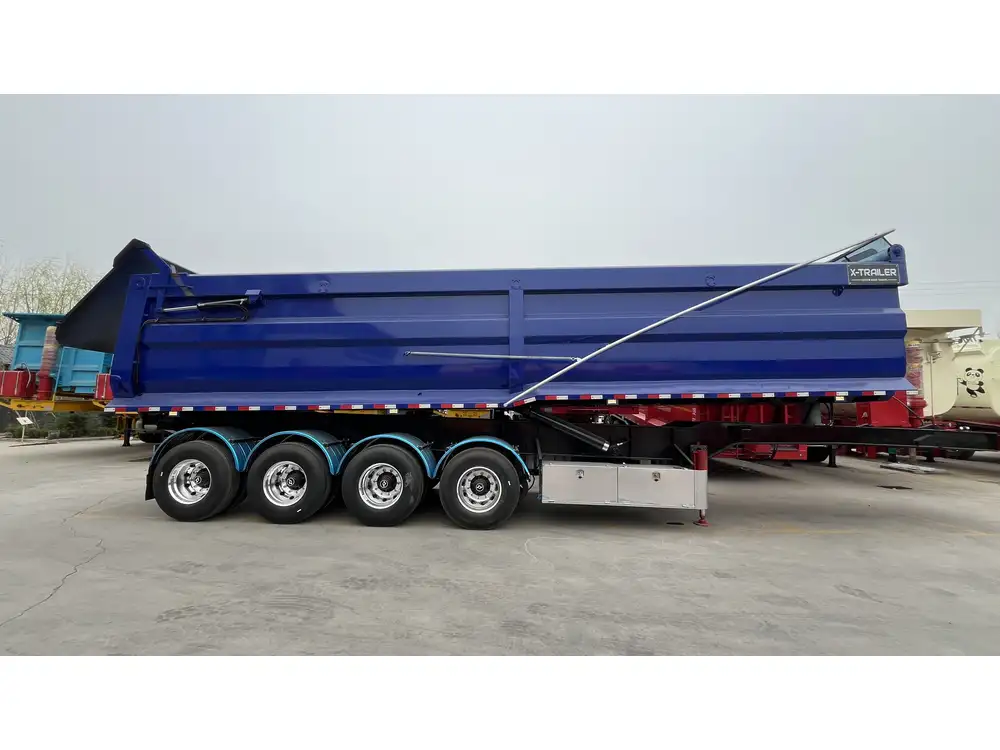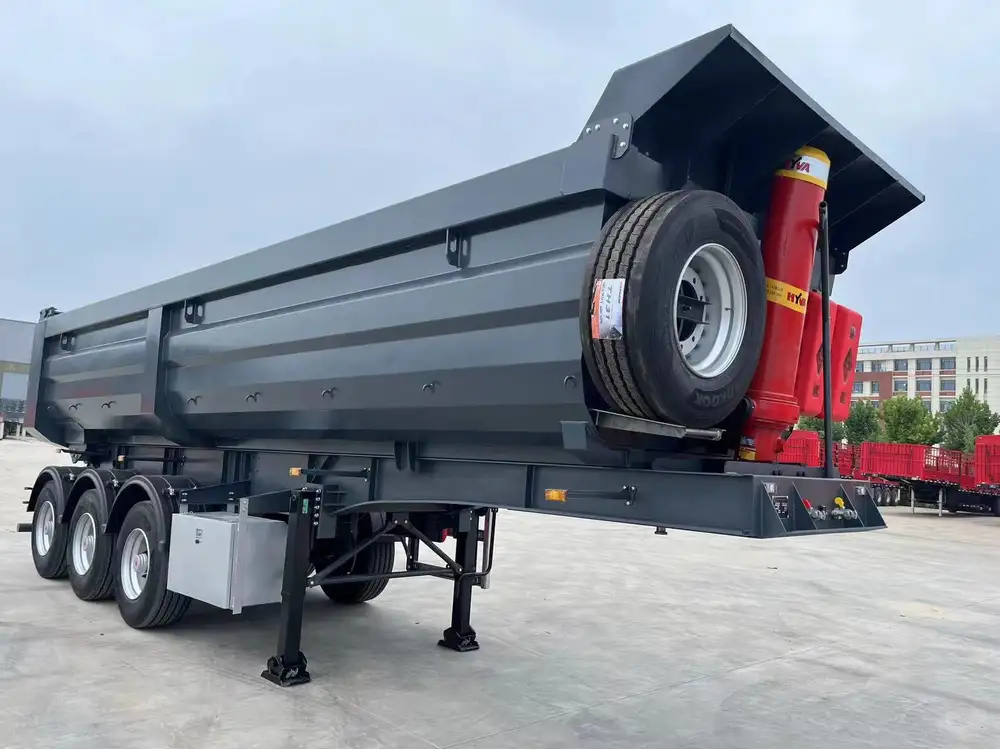When considering transportation needs, particularly in the logistics and freight sectors, understanding the dimensions of vehicles is vital. The inquiry into whether a car can fit under a semi trailer encapsulates a blend of engineering insight, safety parameters, and compliance with regulations. This comprehensive guide delves into the intricacies of this subject, providing detailed analyses, comparative insights, and practical considerations.
Dimensions of Semi Trailers: What You Need to Know
Standard Height and Clearance
A typical semi trailer stands approximately 13.5 feet high (162 inches), with variations based on the type of trailer. For instance, flatbed trailers may have slightly different dimensions due to the absence of a roof, while enclosed trailers commonly adhere to the standard height. The critical factor to grasp here is the ground clearance, which is the height from the ground to the lowest point of the trailer.
| Type of Trailer | Typical Height | Ground Clearance |
|---|---|---|
| Standard Van Trailer | 13.5 ft (162 in) | ~1.5 ft (18 in) |
| Flatbed Trailer | 13.5 ft (162 in) | ~1.0 ft (12 in) |
| Refrigerated Trailer | 13.5 ft (162 in) | ~1.5 ft (18 in) |
| Lowboy Trailer | 12-14 ft (144-168 in) | ~2.5 ft (30 in) |

Width Considerations
Semi trailers generally have a width of 8.5 feet (102 inches), which adheres to federal regulations for maximum roadway width. This dimension is crucial when considering the fit of a car beneath the trailer; however, the ability to fit any vehicle will depend significantly on its width.
| Vehicle Type | Average Width |
|---|---|
| Compact Car | ~5.8 ft (69 in) |
| Midsize Car | ~6.5 ft (78 in) |
| SUV | ~6.3 ft (75 in) |
From these dimensions, it is clear that the width of an average car generally fits within the width limits set by the semi trailer.
Height of Standard Cars: A Comparative Overview
To understand whether a car can fit under a semi trailer, we must also analyze car heights. The average height of a standard passenger vehicle typically ranges from 4.5 to 5.5 feet (54 to 66 inches).
| Vehicle Type | Average Height |
|---|---|
| Compact Car | ~4.5 ft (54 in) |
| Midsize Car | ~5.0 ft (60 in) |
| SUV | ~5.5 ft (66 in) |
Can a Car Fit Under a Semi Trailer?
Given the standard heights of semi trailers and the general heights of cars, in ideal conditions, most passenger vehicles can fit underneath a semi trailer theoretically. However, several real-world factors must be considered:
- Operational Limitations: Due to the presence of other vehicles, road conditions, and potential obstructions, fitting a car underneath a trailer is not practical for use on standard roadways.
- Safety Concerns: Attempting to fit a vehicle under a moving or stationary semi trailer poses significant risks. The clearance between the ground and the trailer may not accommodate the safety buffer needed.
- Regulatory Compliance: Laws surrounding road safety and vehicle operation may restrict the maneuvering of a car beneath a semi trailer.

Practical Considerations and Challenges
Maneuverability and Operational Constraints
Fitment goes beyond mere dimensions; practical operation is a key factor. Here are several considerations:
- Turning Radius: When navigating curves, the combined width and height of the trailer and vehicle may limit maneuverability.
- Loading and Unloading: Accessing a vehicle from underneath a trailer for maintenance or transport is impractical. Hitches, lines, and other connectors may further complicate access.
- Traffic Scenarios: Under real-world conditions, traffic dynamics make the idea of fitting a car under a semi trailer not only illegal but also exceedingly dangerous.
The Role of Ground Clearance
Given the various types of trailers and their corresponding ground clearances, some specialized vehicles, like certain sports cars, may have a lower profile but still remain impractical for physical fitment under a semi trailer.
For example, a lowrider vehicle may have a low profile under optimal conditions. However, the inherent risk in attempting to place any car beneath a moving semi trailer far outweighs any theoretical fitment.

Alternative Uses of Semi Trailers: Vehicle Transportation
Rather than fitting vehicles under semi trailers, semi trailers are designed for transporting vehicles in various configurations. Here are two common setups:
- Car Haulers: These are specialized trailers built specifically for transporting multiple vehicles. They feature multi-level designs accommodating larger heights and protect the vehicles during transportation.
- Flatbed Trailers: Ideal for larger loads, flatbed trailers can carry oversized vehicles effectively and securely without unpacking height-based constraints.
Case Study: Could Modified Trailers Accommodate Vehicle Transportation?
While a traditional semi trailer may not be suitable for fitting a car beneath it, modifications could lead to alternative pursuits:
Experience-Based Adjustments: Some industries modify trailers for transporting lower-riding vehicles, such as show cars. Although this does not entail fitting a car under the trailer, adjusting the base for lower-centered gravity aids stability during transport.
DIY Projects: Through creative engineering, one may build custom trailer systems designed explicitly for unique vehicles.
Here’s a simplified table summarizing the suitability of various trailer types for transporting different vehicle profiles:
| Trailer Type | Ideal Use Cases | Vehicle Height Compatibility |
|---|---|---|
| Standard Semi | Freight Transport | Cars, light vehicles |
| Car Carrier | Multi-car Transport | Standard, performance vehicles, luxury cars |
| Lowboy Trailer | Low Profile Transport | Sports cars, construction equipment |
Conclusion: The Practical Takeaway
While theoretically, some vehicles can fit under a semi trailer based on height and width comparisons, several practical, safety, and regulatory factors must be accounted for. Flipping the question from “Can a car fit under a semi trailer?” to “How can trailers best be utilized for vehicle transport?” reflects a more imperative approach to road safety and compliance with transport regulations.
For further inquiries on semi trailer specifications, load planning, or the appropriate transportation methods for your needs, do not hesitate to engage with our expert team. Understanding these dimensions and their applications is pivotal in ensuring both safety and efficiency in logistics operations. We know that our trailers can meet a variety of transport requirements, and we remain committed to facilitating innovative solutions tailored to the transport industry’s evolving demands.



